How to edit MKV file

By Olga Krovyakova - modified March 7, 2024, created March, 28 2019
SolveigMM Video Splitter is the easy to use video editor that help both users and professionals to fulfill various video editing tasks in few minutes with several mouse clicks. In this guideline we will learn how to edit MKV file.
Below you can find step by step instruction on how to edit MKV file with Video Splitter by cutting off two fragments from the initial file.
1. Open your file by clicking on the Add files to the Media library... or just drug and drop to the program your file from the Windows Explorer folder.
2. Choose the file you would like to edit.
3. Click the OK button.
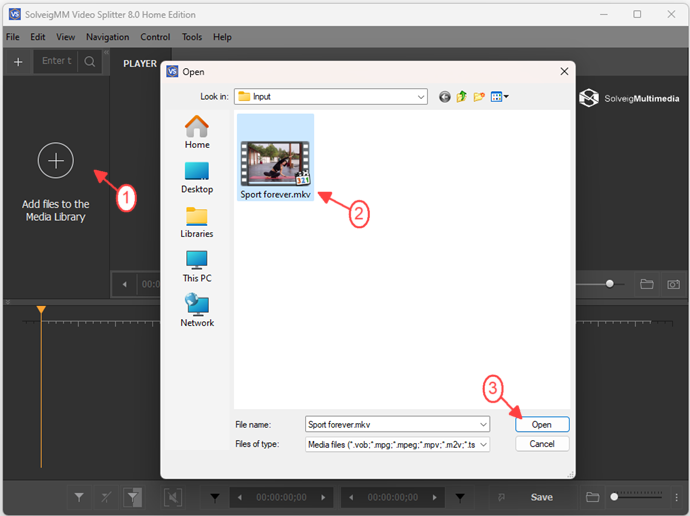
Figure 1
4. Move the file from the Media library to the timeline.
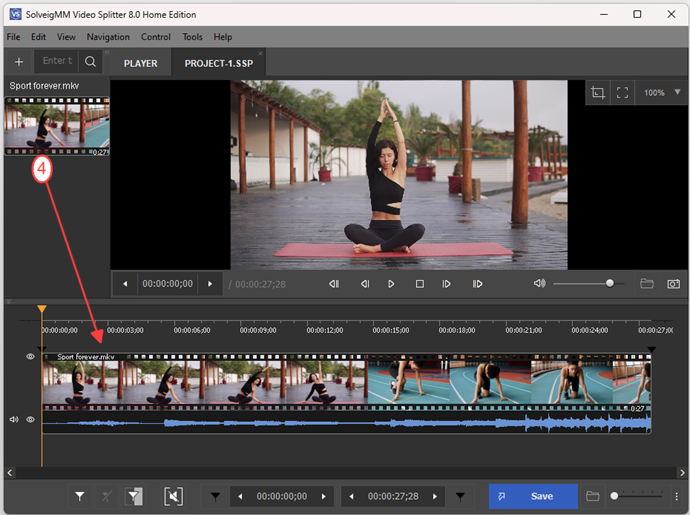
Figure 2
5. Now you can choose the fragments you would like to be saved or cutted. You can do this in the few ways, using Video slider and placing it in the required position using Add Marker button or changing the value in the edit box of a left marker cursor time position (see Basic Terms). If you would like, you can set the value manually.
You can also use Add Marker command from the Edit menu to place the marker or the [M] hot key.
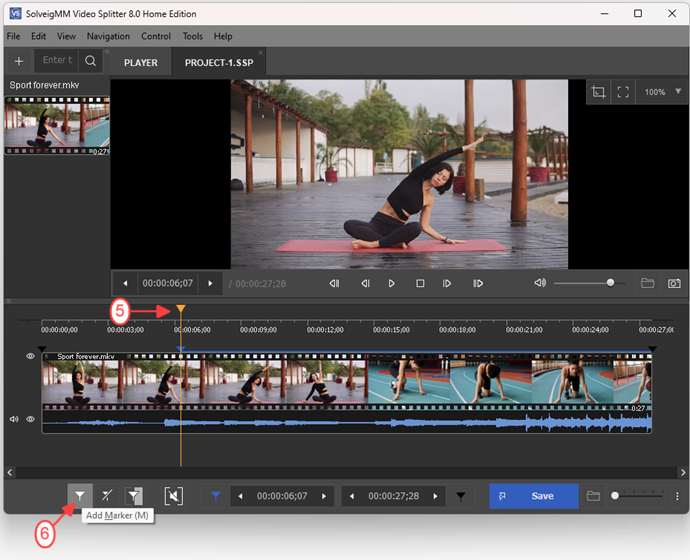
Figure 3
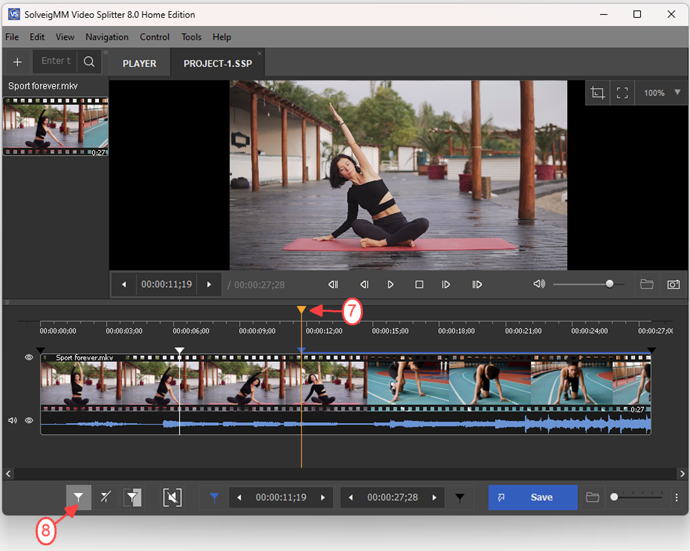
Figure 4
8. Add start/end markers for other fragments.
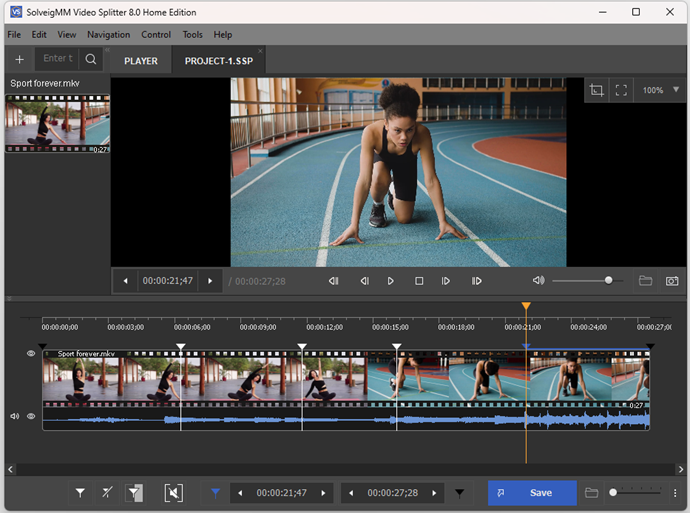
Figure 5
9. Move the mouse cursor to the fragment you would like to be cutted off and place it between the markers.
10. Click on the "scissors" button that will arise under the fragment or place the mouse cursor on this fragment and choose Cut Out Selected Fragment command from the Edit menu or use [D] hot key. The fragment will be marked with brown-red color (see Basic Terms).

Figure 6
Video Splitter provides possibility to open the initial input or output file in the the Windows Explorer. Just use appropriate command in Tools->Explore Folder menu: Input to open the original file and Output to browse the folder with the resulted file. At the end of the editing process it will be offered to browse the folder with the output file.
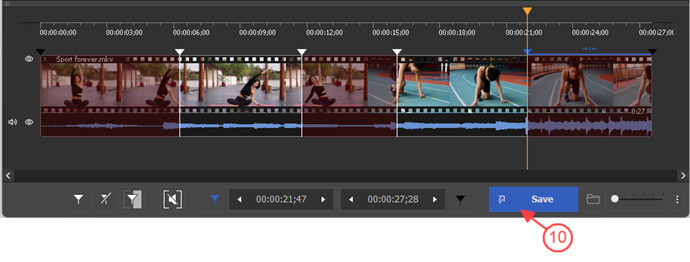
Figure 7
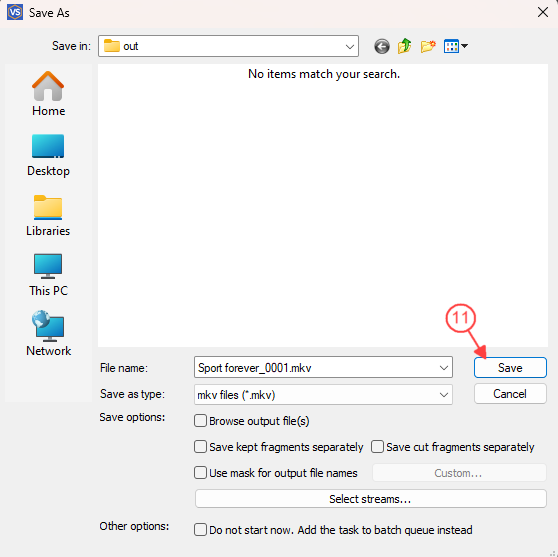
Figure 8
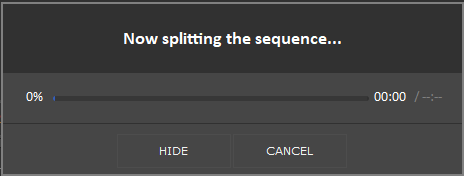
Figure 9
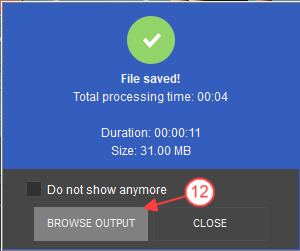
Figure 10
Understanding of some basic terms used in this guide will help you to start using SolveigMM Video Splitter in most comfortable way.
 |
Marker is set to a current cursor position. |
|
|
The selected marker is highlighted with blue color. |
Markers can be added or deleted. Such operations as deleting and positioning are applied to the selected markers only.
Fragment is a part of video (or audio) file limited by two markers to be removed or kept in a final movie, e.g. commercial block you want to cut off. Selected fragments are marked with orange color. Fragments marked as 'cut off' are colored with white color.
Examples of fragments are provided in table below:
| Color of Fragment | Description |
|---|---|
 |
This fragment was set to be deleted. It will not be presented in final movie |
 |
This fragment was set to be kept. It will be presented in final movie |
 |
This fragment was set to be deleted. It will not be presented in final movie. Yellow slider on it means you can edit it (delete, set it to be kept, etc.) |
 |
This fragment was set to be kept. It will be presented in final movie. Yellow slider on it means you can edit it (delete, set it to be cut off, etc.) |
Control Panel contains main tools for file processing.

| Window Element | Description | Shortcut Key |
|---|---|---|
|
|
Button "Add Marker": Adds a new marker to current slider cursor position. |
M
|
|
|
Button "Remove Marker(s)": Removes a current marker or fragment. |
Delete
|
|
|
Button "Invert": Inverts time line fragments. |
I
|
|
|
Button "Set audio silence": Sets the audio silence for the selected fragment. | |
|
|
Button "Save": Starts trimming or Batch Processing (if batch queue has any task). |
Ctrl+T
|
|
|
Edit box of a left marker cursor time position. You can edit this value by manually. | |
|
|
Edit box of a right marker cursor time position. You can edit this value by manually. | |
|
|
Button "Zoom In/Out": Increases/descreases a slider timeline resolution for more comfortable editing neighbor markers (*). |
Num+ Num- |
|
|
Button "Browse output file(s)": opens folder in the File Explorer with the output file. | |
|
|
Audio off/on: turns off/on sound of the whole video track Story board or audio wave off/on: turns off/on the story board or audio wave
|
|
|
(*) - To view timeline areas after Zoom In you can use a scroll bar (below a timeline slider) and "Alt + Left arrow" and "Alt + Right Arrow" hot keys. |
||
- https://www.solveigmm.com/en/howto/how-to-split-mkv-file-with-video-splitter/
- https://www.solveigmm.com/en/howto/how-to-rip-audio-from-video-with-video-splitter/
 Olga Krovyakova is the Technical Support Manager in Solveig Multimedia since 2010.
Olga Krovyakova is the Technical Support Manager in Solveig Multimedia since 2010.
She is the author of many text and video guidelines of company's products: Video Splitter, HyperCam, WMP Trimmer Plugin, AVI Trimmer+ and TriMP4.
She works with programs every day and therefore knows very well how they work. Сontact Olga via support@solveigmm.com if you have any questions. She will gladly assist you!
 Eng
Eng  Rus
Rus  Deu
Deu  Ital
Ital  Esp
Esp  Port
Port  Jap
Jap  Chin
Chin